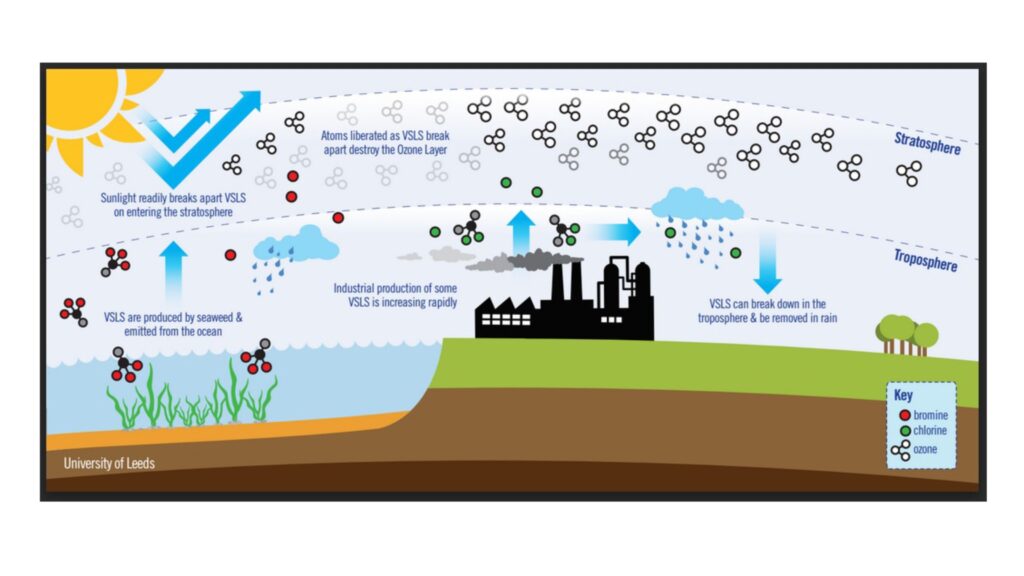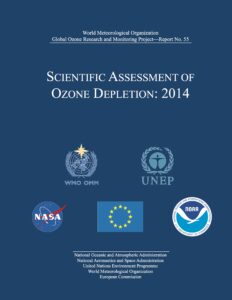New ozone threat
- PostedPublished 7 April 2015
A rapid increase in atmospheric concentrations of dichloromethane – an ozone-depleting substance not controlled by the Montreal Protocol – has been discovered by scientists from the University of Leeds in Britain.

While the current rate of ozone-depletion by dichloromethane is small, because it attacks ozone at the lowest altitudes of the stratosphere it has a significantly greater impact on climate than CFCs that destroy ozone at higher altitudes.
Where man-made dichloromethane originates is not fully understood, but scientists involved in the study did make a link to the fact it is used in the process of manufacturing some HFCs – an ironic twist given the ozone-depleting CFCs banned under the Montreal Protocol were replaced in many cases by HFCs.
Study lead author Dr Ryan Hossaini, from the School of Earth and Environment at the University of Leeds, said the industrial production of substances like dichloromethane swerved regulation under the Montreal Protocol because ‘historically these chemicals have contributed little to ozone depletion’.
He added that if the increase in atmospheric dichloromethane is allowed to continue, ‘it could offset some of the benefits to the Ozone Layer provided by the Montreal Protocol’.
Measurements taken by the National Oceanic and Atmospheric Administration (NOAA) in the United States were analysed and revealed a rapid increase in dichloromethane.
Study co-author Professor Martyn Chipperfield said monitoring of atmospheric concentrations of substances like dichloromethane must continue and their sources identified.
‘At present, the long-term recovery of the Ozone Layer from the effects of CFCs is still on track, but the presence of increasing dichloromethane will lead to uncertainty in our future predictions of ozone and climate.’
Dichloromethane is classed as a ‘very short-lived substance’ or VSLS. Other sources of VSLS include seaweed, with around 90 per cent of total ozone loss in the lower stratosphere caused by naturally emitted VSLS.
However, the contribution from industrial VSLS compounds is increasing and appears set to increase further in coming years.
Study co-author Dr Stephen Montzka from NOAA explained: ‘The increases observed for dichloromethane are striking and unexpected; concentrations had been decreasing slowly in the late 1990s, but since then have increased by about a factor of two at sites throughout the globe.’
The study into this new ozone threat was published in the Nature Geoscience journal under the title Efficiency of Short-Lived Halogens at Influencing Climate Through Depletion of Stratospheric Ozone and funded by the Natural Environment Research Council.
Not all bad news
UNEP’s latest Scientific Assessment of Ozone Depletion report, which is updated every four years, has revealed the ozone layer is on track to recover to 1980 benchmark levels by 2050 in mid-latitudes and the Arctic.

However the Antarctic ozone hole is expected to persist until much later this century due to the ozone-depleting substances still circulating in the upper atmosphere. Ozone levels have remained fairly stable since the year 2000.
The report, comprising findings from 300 scientists, provides a strong indicator of the Montreal Protocol’s success in bringing ODS under control, which UNEP says will have prevented two million cases of skin cancer annually by 2030.
Reducing ODS emissions under the Montreal Protocol has also helped slow the amount of global warming gases entering the atmosphere, with a 90 per cent reduction of CO2-equivalent emissions from ODS compared with 1987 levels of 10 gigatonnes per year.
On the other hand, HFCs currently account for about half a gigatonne of CO2-equivalent emissions per year, and growing at a rate of about 7 per cent annually.
A global phase-down of HFCs under the Montreal Protocol is looking increasingly likely.
- CategoriesIn SightGlass
- TagsSightGlass News Issue 1

